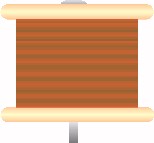Pickups are the heart (but far from the only factor) of the guitar’s sound. They affect guitar’s tonal character, output, and sensitivity (and in some cases, the ability to sound in tune). This column examines different pickups, their construction, and how differences in construction determine the way a pickup sounds.
The main variables in pickup construction which have an effect on sound are the number of coils, the shape of the coils, the amount of wire wound on the coil, magnet material, magnet placement, and the magnetic or magnetized area which senses the string’s vibrations. Seems like a lot of stuff, but his is really easy. There are, of course, other factors that affect the pickup’s sound such as coil wire diameter. Most vintage pickups were manufactured using 42 AWG enameled copper wire, although the use of 36 guage and 43 guage date back to some of the earliest pickups. Currently, pickups are manufactured from a variety a gauges ranging from 36 to 46. The most common reason to use thinner wire is that more will fit on a pickup bobbin. Note that some inexpensive pickups manufactured in other countries, while they may look like the real McCoy and may be on a guitar from a reputable manufacturer, may use non-conventional materials for pickup construction. These cheap pickups generally sound, well, cheap.
For the basics, we’ll start out with the single coil pickup. The same principals will apply to 2 coil (humbucking) pickups.
IMPEDENCE: Pickup gurus will tell you that impedence is the key to prdicting a pickups tonal qualities. This is because impedence factors in things like pickup design, magnets, and coil windings. Rather that focus on impedence, which is often not reported and not easy for the average person to measure, let's look at the individual things that can influence a pickup's tone.
COIL SHAPE: The illustrations below show one tall coil (left) and one shorter, fatter
coil (right). A tall, thin coil (Stratocaster) will tend to be bright and clear while
a wide coil (P-90) will tend to be fatter sounding given the same amount of pickup wire
of the same guage wire. This is due to the wider coil having more capacitance, which
rolls off some of the high end. The coil also has some influence on the magnetic field,
further tending to the same result. We'll get to that more below.
RULE 1: Tall thin coils generally have
a brighter sound than short fat ones.


COIL WINDINGS: Measured in resistance (Kilo-ohms), the coil winding will influence
the pickup's tone and output. Less windings generally produce a brighter and weaker
tone while more windings enhance midrange and increase the output.
Different guages of pickup wire also influence the tone by allowinf more wore to be
wrapped on a coil, or by changing the outside circumference of the coil when the same
DC resistance is wound.
RULE 2: The more windings, the louder the
pickup will be and the less treble response it will have.
MAGNET TYPE:
AlNiCo and Ceramic are the 2 materials commonly used in guitar pickups. Each type has its
own maximum magnetic energy that influences the pickup's tone. Here are genelizations
about common magnet types:
Alnico 2 - warm and round from treble to bass.
Alnico 3 - clear and balanced. Least powerful Alnico blend used.
Alnico 5 - powerful and rich in upper mids.
Alnico 8 - very powerful with excellent highs and upper mids.
Ceramic - very powerful and clear with exceptional highs and tight lows.
RULE 3: Alnico magnets sound smooth and
warm and distort smoothly, ceramic magnets sound brighter and distort cleaner
but a bit less full.
RESONANT FREQUENCY:
This is a property of the coil that tells us the frequency at which the coil produces
its most output. Not a huge factor, but interesting to note. A vintage Strat pickup
will have a resonant frequency of about 10Khz, which is above the spectrum of the notes
a guitar can produce. Other pickups with lower resonant frequencies will show a bit of
a boost at that frequency, similar to bumping that band of a graphic equalizer up a bit.
RULE 4: Resonant Frequency can be used to predict a bit
of the quality of a pickup's tone.
MAGNET STRUCTURE: Magnet Structure
Given the same magnets, a pickup using a magnet or individual magets as the pickups
pole piece(s) will have more magnetic energy closer to the strings. A pickup that
uses steel pole piece(s) with magnets under the pickup will have less magnetic energy
near the strings. More magnetic energy near the strings seems to increase treble and
note attack in pickups. Also, the larger the magnet (or magnets) used, the stronger
the magnetic field. This assumes that the magnets are charged to the maximum capacity
and not positioned away from the pickup's poles (ala DiMarzio patented air-bucker
technology).
The drawbacks of the Fender design include
not being able to adjust the pole pieces and the phenomena of getting magnets
too close to the strings which can lead to an out of tune sounding instrument
(especially the low E string). The advantage of the Fender design
is increased sensitivity of the pickup.
RULE 5: Magnet pole pieces are not adjustable
but increase power and sensitivity. Steel pole pieces are adjustable
and enable a variety of magnet structures to be placed below the coils,
but are less sensitive to string vibrations.
MAGNETIC FIELD: The shape of a pickup, it's magnetic pole(s) and its coils have an
influence on the magnetic field of a pickup. The pickup will magnetize the string at
the area where the magnetic field is strongest. The vibration of the string along this
area will cause some frequencies to be accentuated and some possibly supressed, and may
cause a form of some distortion. The magnetic field also "seeks" the opposite polarity,
so overall pickup design will dictate the path of that type of magnetic energy.
For example, a pickup using a thin blade for a pole will sense a narrow portion of the
string. This pickup will tend to sound clear and accurate. A pickup with a large bar
or 1/4" pole piece(s) will sense a wider portion of the string and will be louder and
slightly more distorted in how it interprets the vibrations.
Interesting uses of this concept:
A vintage Stratocaster pickup with 1/4" pole pieces will be a bit louder and very
sensitive to vibrations while sounding very similar to the original design, a bit
fatter due to the magnetic field, but a bit brighter due to the increased magnet size.
A high output humbucker with a thin blade design will have added clarity, more so
than a standard design high output humbucker (a characteristic of high output Bill Lawrwnce
humbuckers).
A P-90 had such a fat coil design that the magnetic energy seeking the opposite polairty
wraps around the outside of the coil, spreading out the magnetic field and helping give
the pickup its characteristic tone.
RULE 6: The more length of the string which
a pickup is sensing, the more midrange, sensitivity, and power it will
have.
MAGNET STRENGTH: Relative to pole piece construction, magnetic field,
and type of magnet is the strength of the magnetic field.
This also relates to the proximity of the pickup to the strings.
The stronger the magnetic field sensing the strings vibration,
the more treble response you will hear..
RULE 7: The stronger the magnetic field
sensing the strings, the more treble you will hear from the pickup.
HUMBUCKING: This bring us to the 2 coil humbucker. Here, a second coil is
added with coil windings in the opposite direction and opposite magnetic
polarity. By doing this, the second coil cancels out the noise created
by the first coil. But, we also have widened the length of string
sensed by the pickup, giving us more midrange. Also, any frequencies
sensed by both coils will also be canceled out (ok, it's a little more
complicated than that). Basically, since treble frequencies have
a very short wavelength, there is a greater chance that both coils will
"see" these frequencies the same and will be canceled out. Therefore,
humbucking pickups will always cancel out some treble response -- uh, with
the exception of air coils and stacked humbuckers. Air coils are
a second coil without any magnets (popularized by Alembic). Stacked
humbuckers are similar to air coils in that the second coil does less sensing
of the string than the primary coil. In both air coils and stacked
humbuckers, the single coil sound can be preserved, but because the signal
has to pass through extra wire, it loses a little bit of power.
RULE 8: Standard humbuckers cancel hum
and some treble response. Air coil and stacked humbuckers cancel
hum and preserve the single coil tone at the cost of a bit of power.
Well, that's it for pickups for now. Hope you benefit from this page. Oh, my favorites, you ask? Well, I've been through almost every type of pickup imaginable (except ones that run on batteries) and my preference is for single coil pickups with less than agerage windings (about 5.6K ohms or LESS) and larger magnet structures like 1/4" magnet pole pieces or bar magnets. They're twangy with guts. If I want fat, ballsy tones, I can achieve that through custom wiring / switching techniques. By using this approach, I can rewire a Strat to produce all of the stock tones plus thinner, funkier ones and ultra fat and sustainy ones without any permanent modification to the guitar (no extra switches or holes).
Check out my wiring diagrams area for this diagram and more !!
I've recently renewed my liking for good humbucking pickups. I've learned a few things from Jeff at HighOrder Pickups. Jeff custom winds humbuckers to your desired tone and type of guitar to achieve the sound you're looking for. Highly recommended. I recently installed a pair of HighOrder Alnico 2 humbuckers wound to 8.5k (bridge) and 8.0k (neck) in my 1977 Ibanez LP. Man, I am blown away. I honestly have never heard a humbucker sound so good! I've heard a lot of humbuckers but these HighOrder pickups sound better than any of them. Absolutely the most balanced tone with sizzle and clarity, and artificial harmonics just jump out. Switch the pickup to a single coil and it's the best, chimey, single coil sound I've heard from a 'bucker. Now, I'm not trying to boost anyone's sales or trying to get any special endorsement deals - I just want to pass along a recommendation to anyone who has a humbucker-equipped guitar that they wish would sound better. HighOrder pickups have made me love one of my favorite, old guitars again, and that's a great thing!!